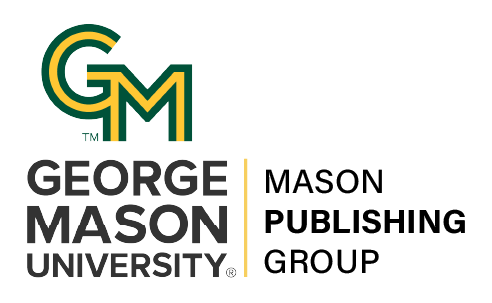Evaluating the Mobility Impacts of American Dream Complex Using Probe Vehicle Data
DOI:
https://doi.org/10.13021/jmms.2021.3174Keywords:
American dream complex, mobility impact, travel time inflation, surrounding corridorsAbstract
Traffic congestion and motor vehicle crashes are perceived as pivotal concerns that are particularly difficult to manage in high-density urban areas. Thus, mitigating traffic congestion and improving users' safety on roadways are top priorities of the United States Department of Transportation (USDOT). American Dream Complex, located outside New York City, is an entertainment and retail center that was officially opened in October 2019. The complex is expected to attract over 40 million annual visitors once fully operational, which may potentially result in substantial mobility and safety issues for road users in the area. The present research work evaluates the mobility concerns of the transportation network in the vicinity of the American Dream Complex due to its partial official opening. To achieve this goal, firstly, the performance of four surrounding corridors was explored by incorporating travel time inflation (TI) as a performance measure. In addition, to have a better visualization of the congestion, day-by-day heatmaps were developed. Based on the results obtained from the Corridor Increase in Mean Travel Time (CIMTT) heatmaps, it was shown that no considerable congestion was observed on the opening day of the American Dream Complex on surrounding corridors.
References
Truckinginfo. (2019). New Jersey has the Worst Traffic Bottleneck in the country. Retrieved from: https://www.truckinginfo.com/325014/new-jersey-has-the-worst-traffic-bottleneck-in-the-country. Accessed on May 07, 2021
American Dream Meadowlands. In Wikipedia. https://en.wikipedia.org/wiki/American_Dream_Meadowlands. Accessed on July 29, 2020
Brennan, T. M., Gurriell, R. A., Bechtel, A. J., & Venigal-la, M. M. (2019). Visualizing and evaluating interde-pendent regional traffic congestion and system resilien-cy, a case study using big data from probe vehi-cles. Journal of Big Data Analytics in Transporta-tion, 1(1), 25-36.
Chen, M., & Chien, S. I. (2001). Dynamic freeway travel-time prediction with probe vehicle data: Link based ver-sus path based. Transportation Research Record, 1768(1), 157-161.
Yamamoto, T., Liu, K., & Morikawa, T. (2006, August). Variability of travel time estimates using probe vehicle data. In Proceedings of the Fourth International Confer-ence on Traffic and Transportation Studies (ICTTS) (pp. 278-287).
Jintanakul, K., Chu, L., & Jayakrishnan, R. (2009). Bayesian mixture model for estimating freeway travel time distributions from small probe samples from multi-ple days. Transportation Research Record, 2136(1), 37-44.
Hainen, A. M., Remias, S. M., Brennan, T. M., Day, C. M., & Bullock, D. M. (2012, June). Probe vehicle data for characterizing road conditions associated with inclem-ent weather to improve road maintenance decisions. In 2012 IEEE Intelligent Vehicles Symposium (pp. 730-735). IEEE.
Brennan Jr, T. M., Remias, S. M., Grimmer, G. M., Hor-ton, D. K., Cox, E. D., & Bullock, D. M. (2013). Probe vehicle–based statewide mobility performance measures for decision makers. Transportation research record, 2338(1), 78-90.
Remias, S. M., Hainen, A. M., Day, C. M., Brennan Jr, T. M., Li, H., Rivera-Hernandez, E., ... & Bullock, D. M. (2013). Performance characterization of arterial traffic flow with probe vehicle data. Transportation research record, 2380(1), 10-21.
Remias, S. M., Brennan, T. M., Day, C. M., Summers, H. T., Horton, D. K., Cox, E. D., & Bullock, D. M. (2014). Spatially referenced probe data performance measures for infrastructure investment decision makers. Transpor-tation Research Record, 2420(1), 33-44.
Brennan Jr, T. M., Remias, S. M., & Manili, L. (2015). Performance measures to characterize corridor travel time delay based on probe vehicle data. Transportation Research Record, 2526(1), 39-50.
Zhang, Z., Wang, Y., Chen, P., He, Z., & Yu, G. (2017). Probe data-driven travel time forecasting for urban ex-pressways by matching similar spatiotemporal traffic patterns. Transportation Research Part C: Emerging Technologies, 85, 476-493.
Zhu, X., Fan, Y., Zhang, F., Ye, X., Chen, C., & Yue, H. (2018). Multiple-factor based sparse urban travel time prediction. Applied Sciences, 8(2), 279.
Brennan Jr, T. M., Venigalla, M. M., Hyde, A., & LaRe-gina, A. (2018). Performance Measures For Characteriz-ing Regional Congestion Using Aggregated Multi-Year Probe Vehicle Data. Transportation Research Record, 2672(42), 170-179.
Chen, P., Tong, R., Lu, G., & Wang, Y. (2018). Exploring travel time distribution and variability patterns using probe vehicle data: case study in Beijing. Journal of Ad-vanced Transportation, 2018.
Bechtel, A. J., Brennan Jr, T. M., Gurski, K., & Ansley, J. (2018). Using anonymous probe-vehicle data for a per-formance indicator of bridge service. Infrastructure As-set Management, 5(3), 85-95.
Thompson, K. R. (2019). Probe vehicle performance measures for assessing travel time reliability.
Regional Integrated Transportation Information System (RITIS). www.ritis.org. Accessed on July 29, 2020
Remache-Patino, B., & Brennan, T. (2020). Characteriza-tion of the Coronavirus Pandemic on Signalized Inter-sections Using Probe Vehicle Data. Journal of Modern Mobility Systems, 1, 101-109.
Downloads
Published
Issue
Section
License
Copyright (c) 2021 Journal of Modern Mobility Systems

This work is licensed under a Creative Commons Attribution-NonCommercial-ShareAlike 4.0 International License.





